The surprising role of deep-sea osmoregulation in the marine carbon cycle
When we think of ocean carbon cycling, our minds tend to drift toward massive phytoplankton blooms, sinking dead zones, or calcifying corals and mollusks. But there’s a lesser-known contributor quietly working at midwater depths: fish guts.
Yes, you read that right. The gastrointestinal tracts of deep-sea fishes, particularly those in the mesopelagic zone (200–1000 meters), are emerging as vital players in ocean biogeochemistry. A new study led by Moran et al. (2025) sheds light on how the process of osmoregulation—the balancing of internal water and salt concentrations—can lead to the production of biogenic carbonates that influence ocean chemistry.
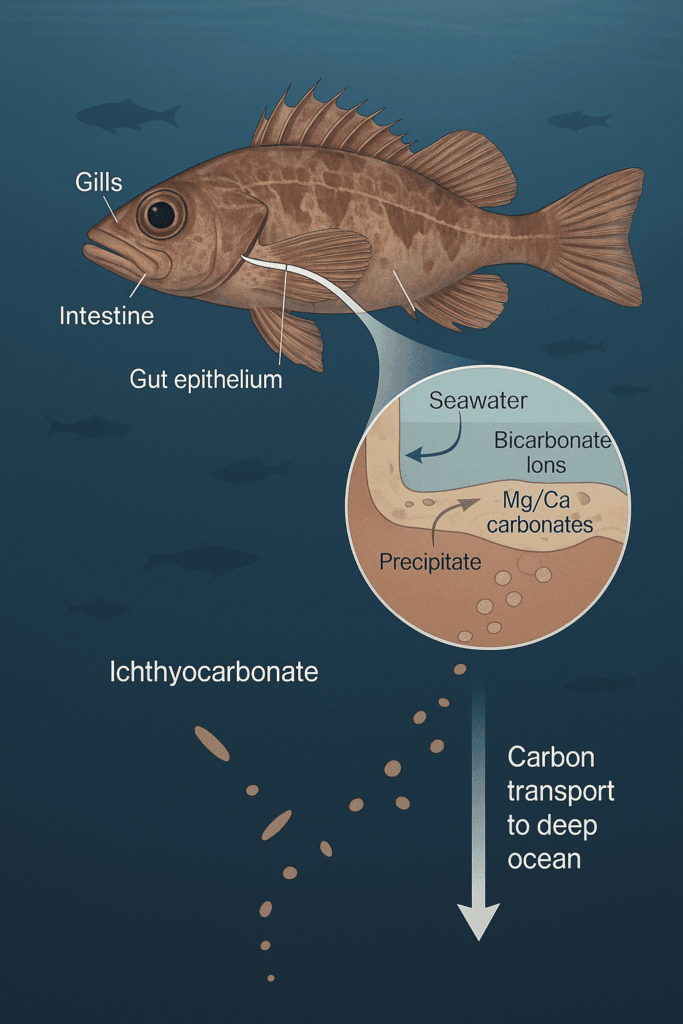
Osmoregulation with a Biogeochemical Twist
Marine teleost fishes constantly battle to avoid dehydration in their salty environment. To stay hydrated, they drink seawater and actively absorb water in their intestines while excreting excess salts through specialized cells in their gills.
In the process, something remarkable happens in the gut: bicarbonate ions (HCO₃⁻) are secreted to facilitate water absorption, and these ions interact with calcium and magnesium in the gut fluid to form solid carbonates—called ichthyocarbonates. These are not just trace waste materials. They are visible crystalline particles, expelled into the water column via feces.
For years, this phenomenon was mostly studied in surface-dwelling fish, where ichthyocarbonate production could be observed in laboratory conditions. But what about the deep ocean, home to one of the largest biomass reservoirs of fish on Earth—the mesopelagic fishes?
A Deep-Dweller in the Spotlight
Enter the blackbelly rosefish (Helicolenus dactylopterus), a benthopelagic species dwelling at depths of 100–600 m across the Atlantic. Though not strictly mesopelagic, it shares ecological and physiological characteristics with many deep-sea fish and is amenable to laboratory study—making it an ideal model.
Moran and colleagues collected specimens of H. dactylopterus from off the coast of Portugal and brought them into a controlled lab environment. They monitored feeding, drinking, and gut function, focusing on carbonate precipitation within the intestine. The fish excreted disc-shaped crystalline particles rich in calcium and magnesium—strong evidence that osmoregulatory carbonate production was indeed occurring under natural salinity and pressure conditions.
Why This Matters
This seemingly niche process has planet-scale consequences. These carbonate particles are denser than seawater and sink rapidly, contributing to vertical carbon flux in the ocean. While fish are not the primary producers of carbonate in the sea, their contribution is often overlooked in marine carbon budget models.
What’s more, the chemistry of ichthyocarbonate differs from that of other biogenic carbonates like those formed by foraminifera or coccolithophores. It is more soluble and dissolves at greater depths, potentially impacting deep ocean alkalinity, buffering capacity, and carbon storage.
Considering the enormous global biomass of mesopelagic fishes, even small individual contributions can translate to a significant collective impact. These findings urge a reevaluation of the fish gut as not just a physiological organ—but as a biogeochemical reactor influencing ocean chemistry.
Hidden Engines of the Carbon Cycle
This study adds to a growing body of work showing that internal physiological processes in animals, not just photosynthesis and decomposition, can actively shape ecosystems. The gut is not just for digestion—it’s a site of chemical transformation, one that can alter the very chemistry of the oceans.
So next time you imagine the deep sea, picture this: schools of twilight-zone fish swimming silently in the dark, unknowingly producing microscopic carbonate pellets in their intestines—pellets that may ultimately help regulate Earth’s carbon balance.
Key Points
- Ichthyocarbonate: Fish-produced carbonate pellets formed in the gut during osmoregulation.
- Species studied: Helicolenus dactylopterus (blackbelly rosefish).
- Significance: These particles contribute to oceanic carbon transport and influence deep-sea chemistry.
- Big Picture: Fish physiology plays an underappreciated role in global carbon cycling.
Suggested Reading
Grosell, M., Marek, B., Walls, S., Pope, C., Sam, C., Heuer, R. M., & Oehlert, A. M. (2025). Osmoregulation by the gastro-intestinal tract of marine fish at depth–implications for the global carbon cycle. Journal of Experimental Biology, 228(14), jeb249834.

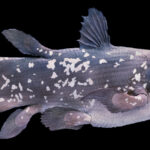

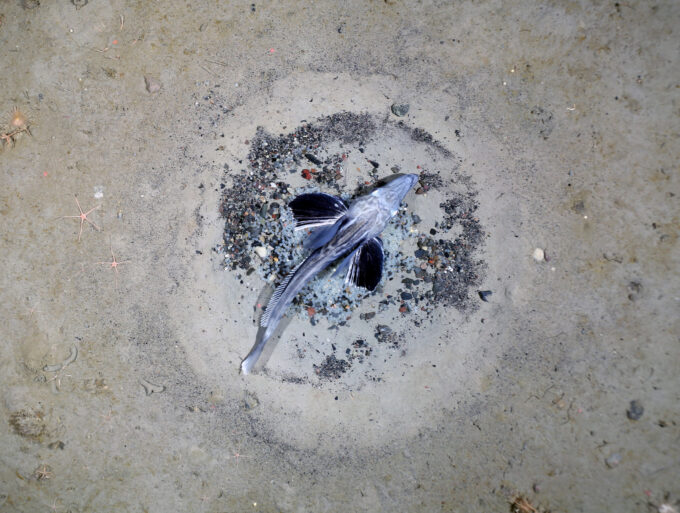
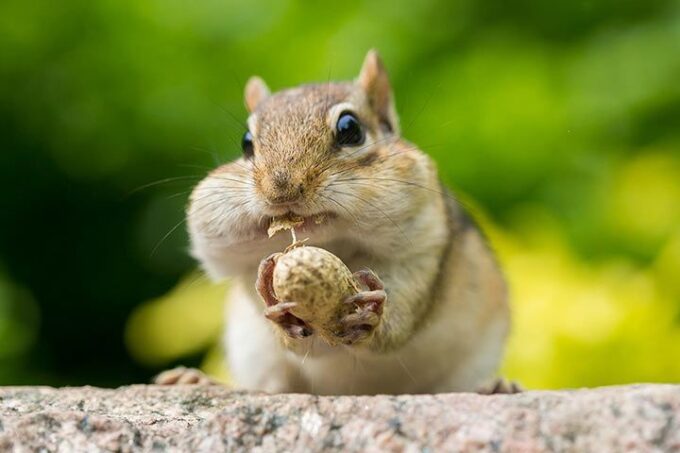
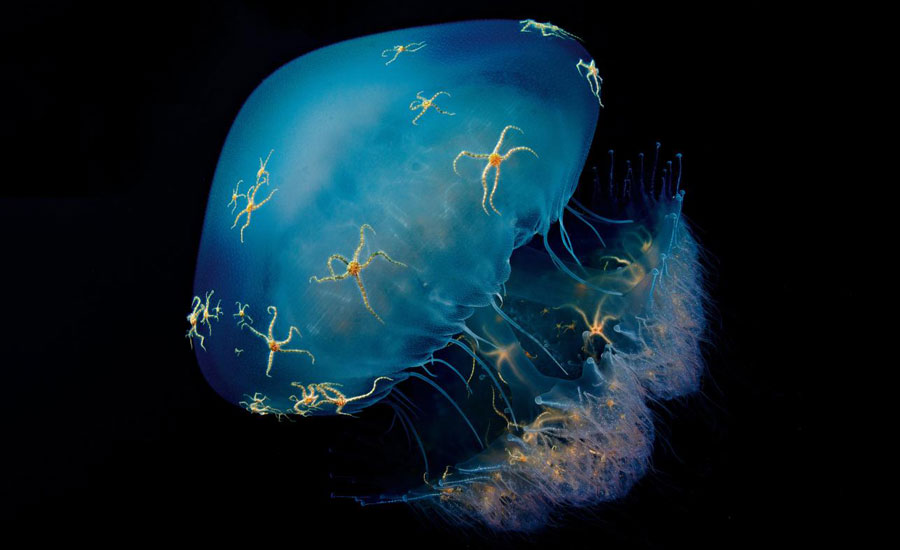
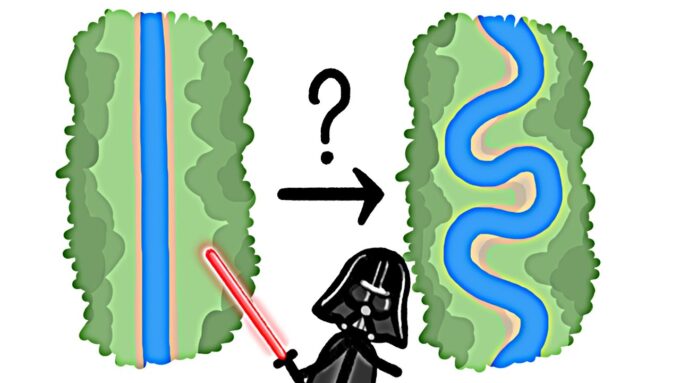

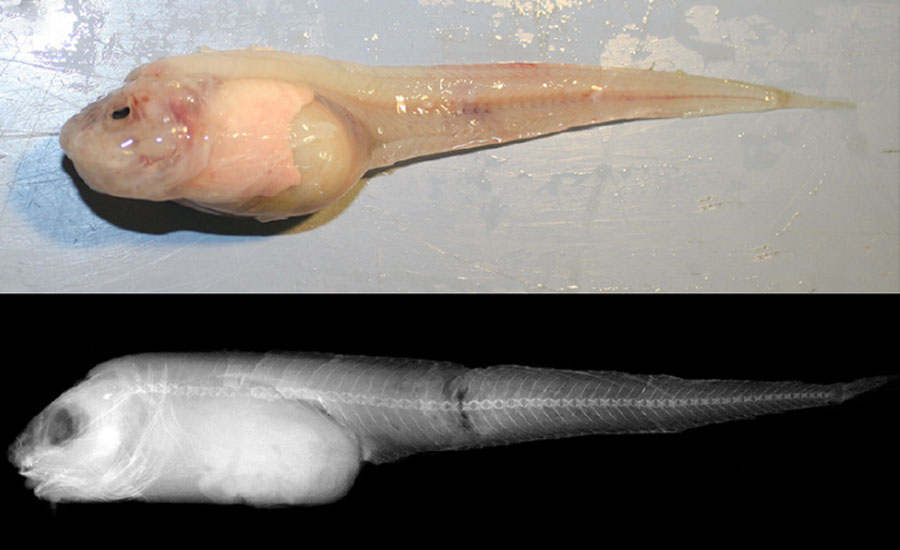
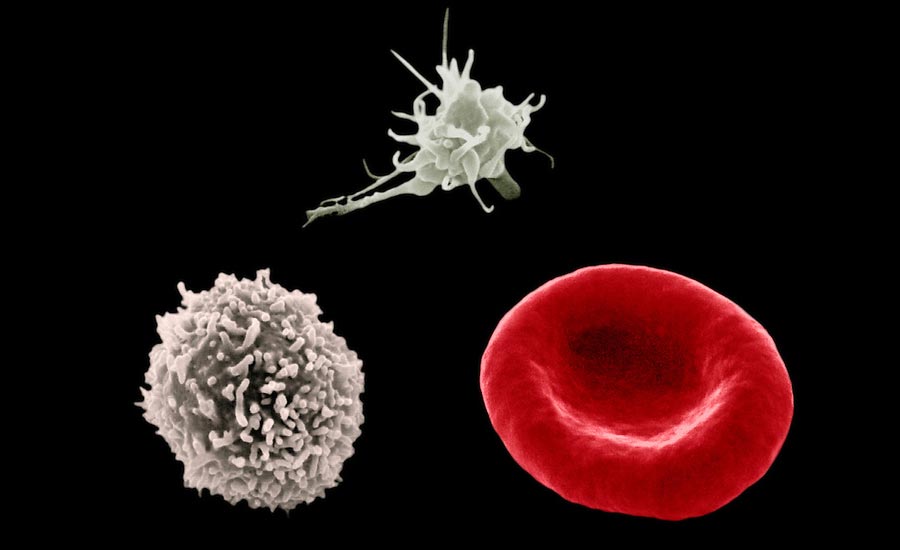
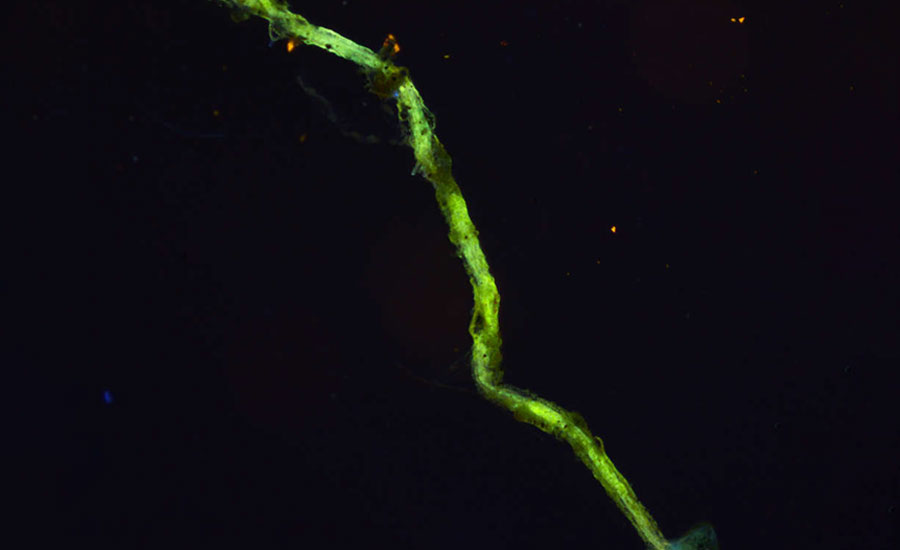
Leave a comment